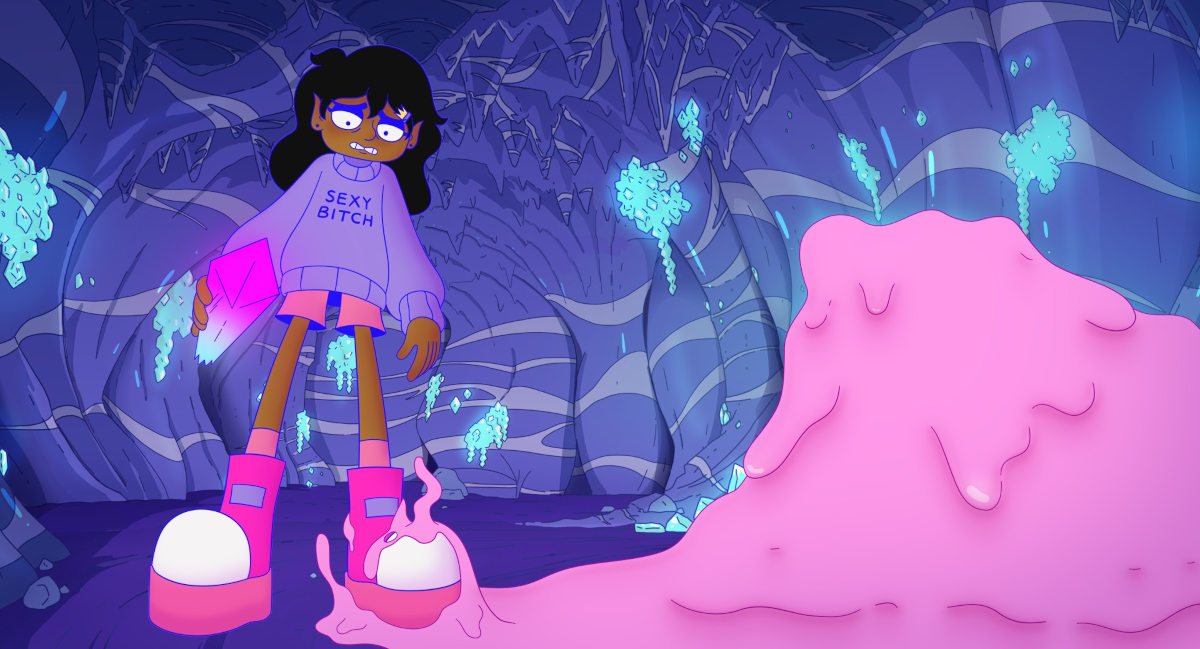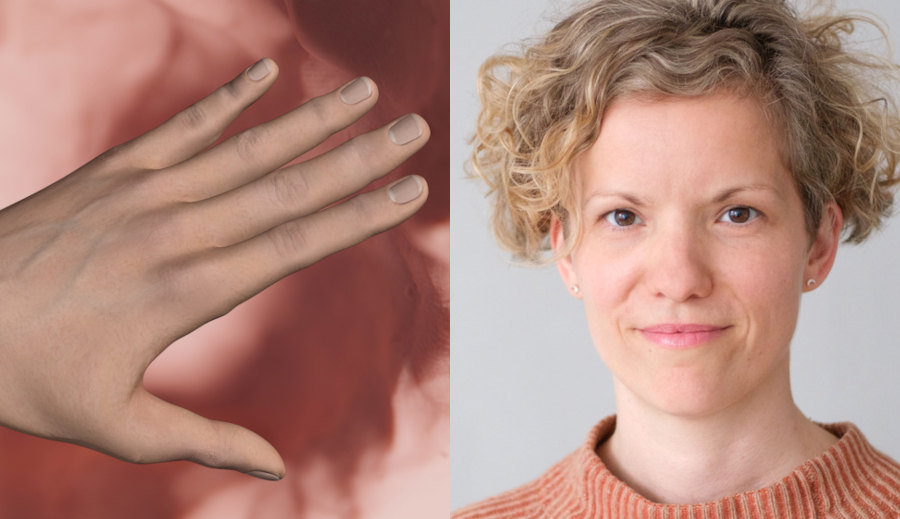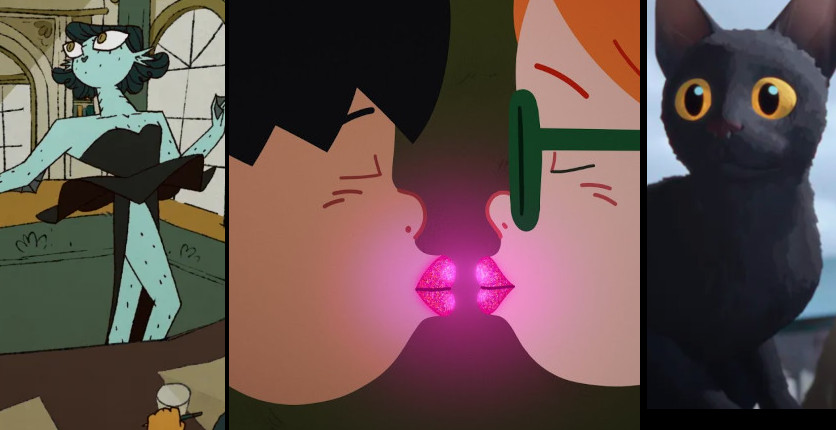Transgender Anti-Heroes: Interview With Anais Caura
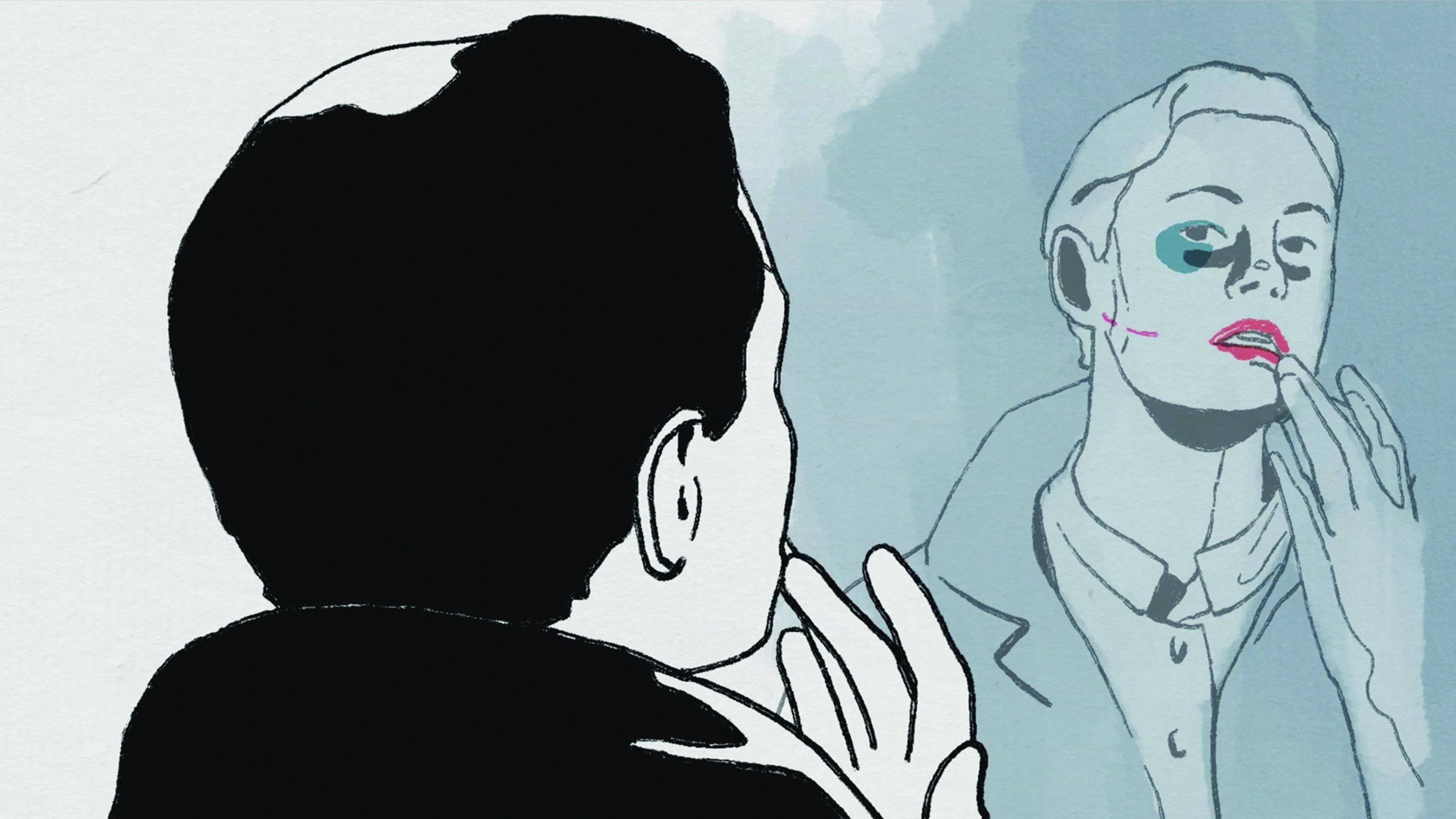
After making its rounds on the European, Latin American and North American film festival circuit, The Man Woman Case (2017) has taken home the Jury Prize at Annecy International Animated Film Festival 2017, Special mention at Animafest Zagreb 2018 and Best Original Soundtrack at La Cabina Festival 2018.
Identified by Zippy Frames’ regular, Olga Bobrowska, as evidence that animated cinema d’auteur is not dead (yet), the film revolves around Italian immigrant Eugene Falleni as he navigates Sydney in 1920’s Australia as a transgender man. Accused of his wife’s murder, Caura takes us on visceral and a sensorial trip through fragments of Falleni’s life. Difference is scary and difference intrigues. Paradoxically, it is in prison that Eugene will be free to be himself.
This is the first English-language interview for the The Man Woman Case.
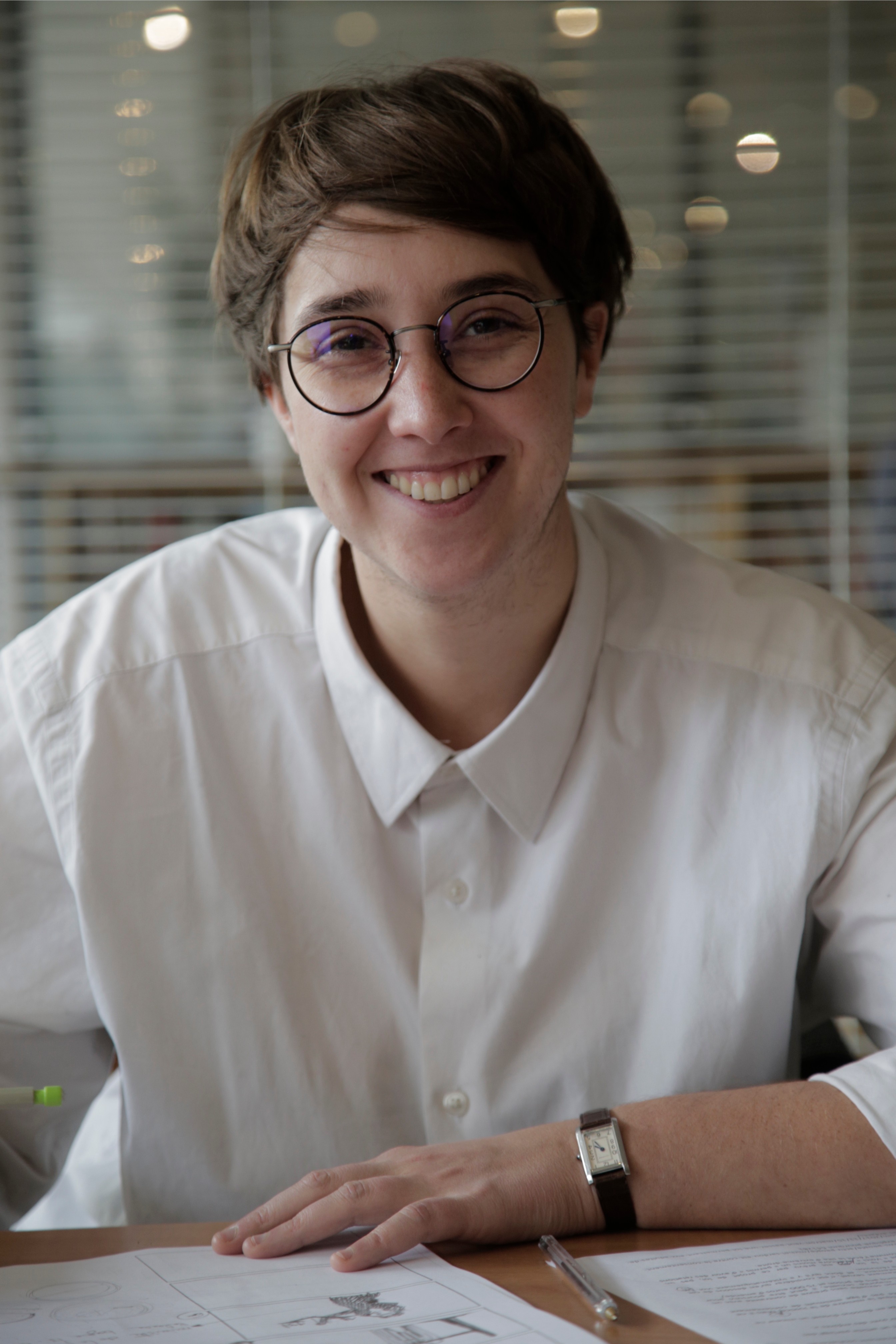 ZF: So, Eugene Fallini, what drew you to his story?
ZF: So, Eugene Fallini, what drew you to his story?
AC: It was actually his photo that really intrigued me. When he was taken into custody his first mugshot was taken while he was still dressed as a man, then after that they forced him to dress up as a woman to make a ridiculous comparison. It was horrible, because in doing so they made him suffer an enormous violence. In denying him access to his own personhood, they humiliated him. It’s worse than being taken into custody; it disowns him as a man.
He has this look, in the initial photo where he’s still dressed as a man with his lovely hat; his eyes convey a lot of pain and a lot of power. It’s a black and white image, and it’s as if his stare could break the lens of the camera. It’s a really impressive gaze, in it; you can see all the suffering in the world.
He’s desperate, but at the same time, determined. There’s something powerful, and profound, in the image. I didn’t know that he was assigned female at birth. When I saw the photo, his eyes are what intrigued me.
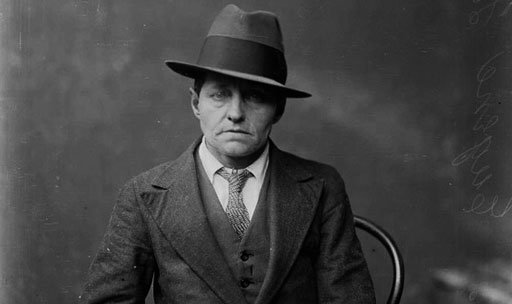
Falleni in 1920. Photograph was taken by the New South Wales Police Department, likely on the day of arrest.
AC: I found it more beautiful than the other mugshots. The others convey a sense of bravado; they look at the photographer like, Yeh I’m a criminal! Whatcha gonna do about it? There was a sincerity in Falleni’s image that was absent from the others. He was sure of himself and his identity, and I think that’s what infuriated the authorities. I like looking at mugs, at criminals’ faces. But this one was different, it was really beautiful.
ZF: Looking up old photos of criminals is a hobby of yours?
AC: Not necessarily, I like old photos in general. My sketches draw a lot of inspiration from old, ugly faces that don’t really exist anymore. They have a way of asserting themselves, a way of being which is really strange. Then with criminals there’s something, not grotesque, but very rough. The black and white photography of the time accentuates everything, but it wasn’t an intentionally elaborate photography practice. This resulted in very powerful images, every time, which is perfect for illustration. I’m a big fan of looking at images in this vein, so after I found Fallini, I read a little bit about him which exacerbated the intrigue. His story is insane! I read into it, and then didn’t know what to do with this story. I wanted to turn it into a graphic novel, but I’ve never worked in this medium and didn’t really know how to do it.
ZF: But you make a comic, of sorts, when you start a film?
AC: A storyboard, yes, but for me this is not the same thing! The rhythm changes, in a storyboard you’re always using the same frame. But in comics and graphic novels you manipulate time and space by playing with the size and shape of the frame, then the act of turning the page will change the rhythm. This is something that I’m learning now and interests me a lot, but (for me) this remains very different to film. You can make animated images, or you can make a comic, but I don’t think they amalgamate easily. It’s a fine line though, what was I saying?
ZF: The photo.
AC: Yes, so, I find this photo. But I didn’t know what to do with his story. Then French TV made a call for proposals, they were looking for projects that may or may not include the words transgender, cross-dressing, escape, isolation, and straight away I knew I wanted to pitch Falleni’s story. I told my producer and we pitched it to French TV, but we didn’t think they would be interested in a period piece, so our proposal was to take the story and reconfigure it to fit within a contemporary setting. Then when we met with the studio, I began by telling Falleni’s story in its historical context. Immediately the studio representatives were like but the original story is so compelling, why don’t you tell it as it exists in history? Then my producer and I were like Well yeh! We agree!
ZF: The proposal of a contemporary re-telling of the tale wasn’t a personal preference, you thought it would please the studio but you preferred the historical context?
AC: Yes. I wanted to make a genre film, a film noir type thing. But we discussed it and said this might not be the most palatable option for a studio, and then it was the studio that said No, you should do it that way.
ZF: Having a story that that plays out in French (in terms of dialogue) but happens in Australia (in terms of setting) gives the film a universalising component. Transphobic violence is neither a French issue nor an Australian issue, it’s a global problem. If you retold the story in a contemporary setting, would you have changed the city/country as well?
AC: Yes, we had initially pitched a story that happens in Paris, but I never liked the idea. We wanted them to take kindly to the concept and thought these changes would facilitate that, but in the end, I think what made the difference was the fact that I had the chance to tell his story in person. For French people, Australia is fascinating and having an Australian story from the 1920’s is impressive.
ZF: That’s such an odd thing for me to hear, being Australian.
AC: I know, it’s really funny! It makes me laugh because I’ve never set foot in Australia, so my vision of it is completely imaginary. I’ve created my own Australia. Obviously, I did my research: examined lots of photos and videos from the time and tried to replicate some of the architecture, but I know very well that my images stem from the imagination.
ZF: Yes, this isn’t a criticism of your work but your style is very European. Seeing my country rendered in this way was a funny experience, because it’s not a question of architecture it’s a question of culture. We have a very specific way of being/presenting and expressing ourselves. Despite being based on a true story, I didn’t recognise Australia in the world that your film presents.
AC: For me, it was an imaginary Sydney. This is why we said that it’s based on a true story. It tells Eugene Fallini’s story but it’s not the exact truth. It’s based on what we read, the interpretation we drew from the source material and what we imagined. This is why I say that he’s my character, because it’s a character that we created who is based on Eugene Fallini. This is absolutely not a documentary. For me, what was important was that we show the violence of his life, to make a film that would be loaded with imagery and have an impact on our audiences. I wanted it to be sensorial, visceral, more than historically precise. But then again, we used plenty of little historical details that are true, and we used lots of metaphors. For example, him being tracked by the crowd didn’t happen in reality, but this was a lot more visual. The crowd was a visual metaphor for how he was hounded by the press. The Man Woman Case is a legitimate title from a journal of the time. So, all the same, it was very violent. Showing him in a cage towards the end of the film was really an exposition of how they made a spectacle of this femininity, this femininity that he had disowned and (for him) had never really existed. What concerned me was how to show, in images, the violence of this man-hunt.
ZF: Some critics focus on the question of whether or not he killed his wife, am I right in assuming this has nothing to do with your film?
AC: Yes.
ZF: And your point was that justice cannot exist when it’s surrounded by this kind of prejudice?
AC: Yes.
ZF: Brazil has the highest rate of transphobic violence in the world, more than three transgender people were murdered per week in 2018. In the same year, outspoken opponent of the LGBT community Jair Bolsonaro was elected president. You were invited to be a jury member at Animage in Recife during the elections, how did that go?
AC: From what I understand, and I was only there for a short amount of time so I’m not going to pretend I’m an expert on Brazilian politics, but to my knowledge Rio de Janeiro was predominantly pro-Bolsonaro and Recife was predominantly pro the opposition, (Fernando) Haddad. Each screening had a different atmosphere because Recife was in the context of a film festival so there were artists and locals in attendance, plus a lot of people from the LGBT community. Whereas in Rio de Janeiro I presented the film at the consulate, the people there were a lot more restrained. They held a vote at the end of the screening to determine whether or not they thought that Falleni was guilty.
ZF: How did you respond?
AC: I didn’t intervene; I let them speak and listened. It was a surprise because this was the first time this had happened. What interested me was having the chance to present the film in different countries, and therefore in different cultures. Indeed, this showed me the multiplicity of points of view on the film. In my mind, a film is a transitional object that allows you to move a conversation forward. We propose something, we as in the team that made the film, the spectators will react and the result of all this is the discussion that follows. This is why we make films, so that people will see them.
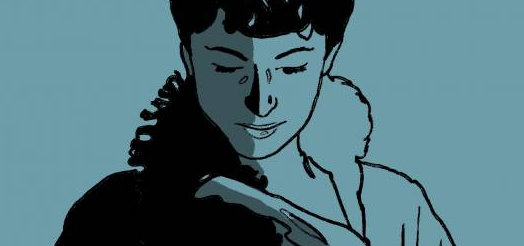
So, to come back to your question, I let the conversation go on and didn’t react any more than that. Even today, all these years later, I do not believe that we can assert ourselves as the public tribunal. We have no proof and what I’ve put forward is fiction. But it was interesting, to see them and their reactions during the film. A few days before the screening, a cow had fallen off a cliff and the whole herd followed him. So, when Annie falls from the cliff the audience burst out laughing and I was like what? They explained afterwards it was because of the cows, but I find that really funny. Cinema brings two temporal settings together: that of the film and that of the spectator. The fact that I was presenting the film in Brazil, during the election campaign, when the welfare of the LGBT community was incredibly topical, is testament to the fact that the film takes place in real time and in history.
ZF: What was their verdict? Regarding the vote?
AC: Not guilty.
ZF: Was that by a large margin?
AC: A gross majority, yes.
ZF: In terms of the production, you had two principal techniques that translated the different emotional states of Falleni. His reality was predominantly black and white, created through rotoscoping. We see colour in his memories, nightmares and introspections which were made through traditional 2D animation. Why did you make this technical and aesthetical choice?
AC: Regarding rotoscoping, I wanted to work with actors. Rotoscoping is when you film actors and then you reinterpret the images in redrawing them. It’s interesting because the actors will bring something to the table, then we see how the animator responds to the embodiment of the action. I leaned towards this technique for the character’s reality, for his contemporary moments that are happening in real time, because I needed a performance. I needed someone to incarnate these characters. This remains a personal preference though, you can make very intimate characters through 2D animation but rotoscoping interests me because creating a film is a team effort. Everyone’s input is what materialises the film. It’s like a cake, you add ingredients and people can make suggestions, and I think that’s great. Then again, you’re a lot freer in 2D animation because your starting point is a blank page. It takes much longer, which adds an economic component, but this depends on the style that you’re using. For his memories, nightmares and introspections, I needed something more fantastical, more hallucinogenic. The two modes of production allowed me to visually differentiate between his past, which mostly consists of nightmares, and his present where he’s accused of murder and is the subject of a manhunt.
ZF: You mention how you consider filmmaking a team sport, but in her report of Animafest Zagreb Olga Bobrowska identified your film as auteur cinema, what do you think of this identification?
AC: Classy! I was lucky because they (the studio) more or less left me the keys and let me do as I pleased. I had a lot of freedom on this project. When you’re making a web series, you generally have less money but 10 000 times more freedom. Then again, you have to get it done with minimal resources, but it really helped that I was working with a really passionate team who were capable of putting a lot of hours into the project. I had bags under my eyes for the entire production. We did it together. It is auteur cinema but the team is the auteur. It’s true that when we think of auteur cinema, we think of some filmmaker all alone in their cave.
But frankly, there’s a renaissance of auteur cinema in France. There’s a lot of formidable work coming out of our animation community.
ZF: That’s interesting, because the title of Bobrowska’s article was Animated cinema d’auteur is not dead (yet). You don’t agree that auteur animation is dying? You think it’s prospering?
AC: Absolutely! Definitely prospering.
ZF: Could you give our readers some names of auteurs you respect?
AC: Sebastien Laudenbach, Osman Cerfon, Agnès Patron, Florence Miailhe, but I’m cheating, Florence was my professor.
ZF: It’s good to respect your teachers. In feminist film circles we’re often talking about representation and self-determination; how it’s better for trans people to make trans films, black women to make films about black women etc. You’re a part of the LGBT community, but you’re not trans. Do you think the gay community has the right to tell trans stories? Did you ask yourself this question during the production?
AC: Yes, regularly. This is why I always told myself that I don’t know what it is to be trans, I cannot know. But then, in any case, everyone is different. Everyone’s story is different. Just because someone is trans, it doesn’t mean they have the right to speak in the name of all transgender people. Being gay doesn’t entitle you to speak on behalf of all gay people; you can only speak for yourself. This is why I always called it our character, our story and our interpretation. But this isn’t a film about transgender folk; it’s a film about Eugene Falleni. It’s what we imagine happened at a specific moment in his life. I would never have the pretention to speak on behalf of anyone except myself. I’m not a spokesperson, I’m a filmmaker. The public can interpret the film as they see fit.
ZF: What can we say in animation, that we would struggle to articulate in other film forms?
AC: I gravitate towards animation because you can draw the invisible and the unspeakable. To animate is to give life. The medium allows me to say exactly what I want to show and see, because I’m the master of the universe that I create. I know how to draw it because the images are in my mind, that’s my way of seeing things. It’s really nice, to communicate through drawings. And these drawings move. It’s great!
ZF: Canadian animator Ben Zelkowicz has said that animators are masochists with a god complex. Would you agree with that statement?
AC: Yes.
Amanda Barbour is an alumnus of the Melbourne International Film Festival Critics Campus and works as a film critic, translator (French/English) and artistic director of intersectional feminist film festival: FEM&IST Films. Her work has been published in Senses of Cinema, SBS Movies, cléo and more. This interview was conducted in French, and has been lightly edited for length and clarity. For the French version, please contact Amanda at
This email address is being protected from spambots. You need JavaScript enabled to view it.
-
Read Also: Why Animated Cinema D'Auteur Is Not Dead Yet




